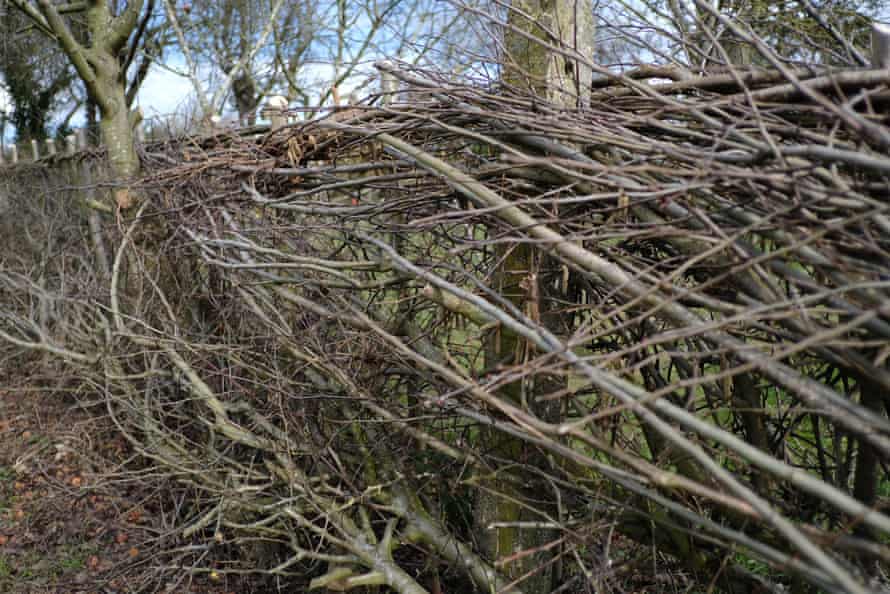Hedges are highways of biodiversity. They’re teeming, humming lines of life – literally. They interlock with the uniform spaces of agriculture like moss between flagstones.
For humans, they are a triumph. A gift. As well as parcelling the landscape usefully, they slow the soil-stripping gales, they self-repair, and they shelter scores of useful species. Few human influences have been beneficial to nature. But since the second world war, even this example of progress has gone sharply backwards, with hundreds of thousands of miles of hedgerows uprooted.
Not here, though. A walk just metres from my home is a community orchard with a project under way on its border. A sign explains things in eager detail. The new hedge is being laid in the Midland style, it says. Regional variations include Derbyshire, Brecon, Lancashire, Westmorland, Devon – all distinctive due to local requirements and materials. Essentially, shrub is laid, then almost cut through at the base, allowing it to be “timbered” at a tilt. This continues along the hedge, creating a row of “pleaches”. As long as there’s a thread of connection to the root, the hedge will rejuvenate in spring, sprouting sideshoots to fill the gaps. It’s a beautiful recruitment of nature, for purpose, to the benefit of both.

The words make sense of what I see, which is a complexity of stakes, hazel stems pleated like rope, and a scrabble of hawthorn. This countryside art seems to be a weave of others: part drystone walling, part forestry, part embroidery. But it’s also a canny corralling of nature’s own tenacity. Broadside, it’s an image of pure disorder: a wriggle of branches, gappy and sharp. But stand at one end and look along the whole at a shallow angle, and you see the pattern: a 45-degree incline like the layered leaves of an open book.
It’s an education to see it take shape. This craft was once commonplace, but this hedge is maybe more ornamental. In sight of the rooftops of Stamford, it’s a little exhibit of a formidable skill that has long since been outscored by humans and their economies of scale. As I walk alongside the new hedge, and some already curious finches burst out of it, I think what a shame that is.